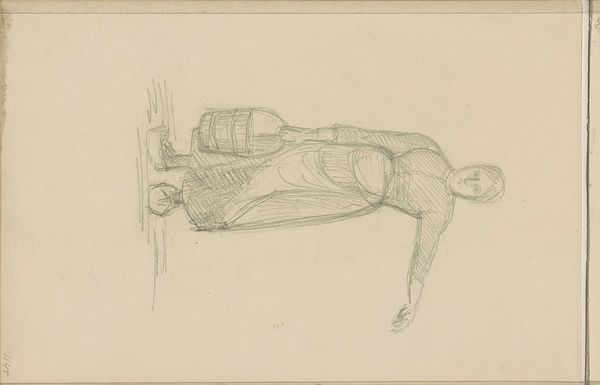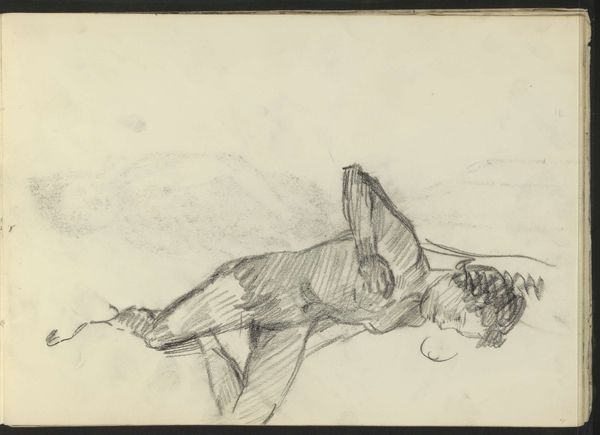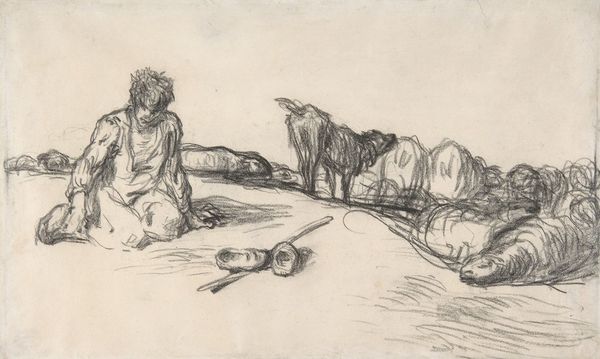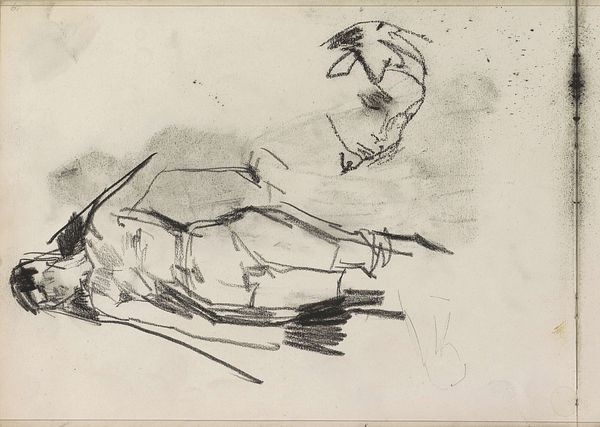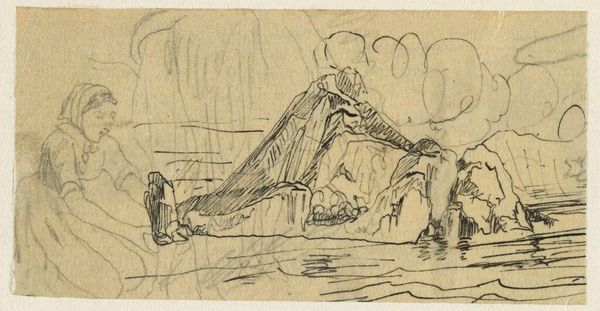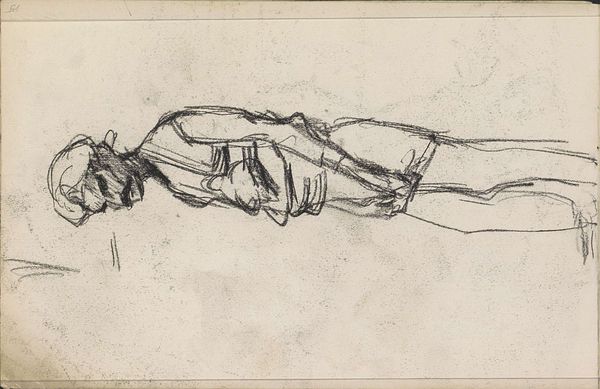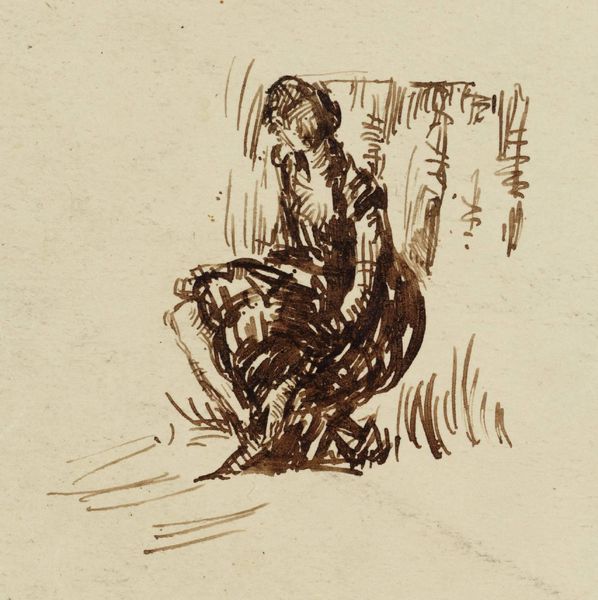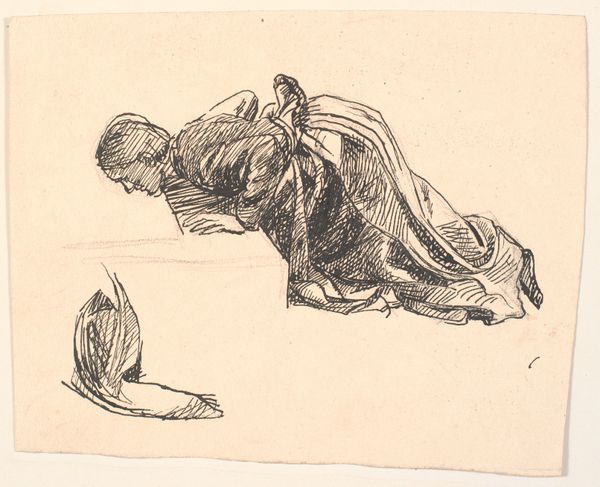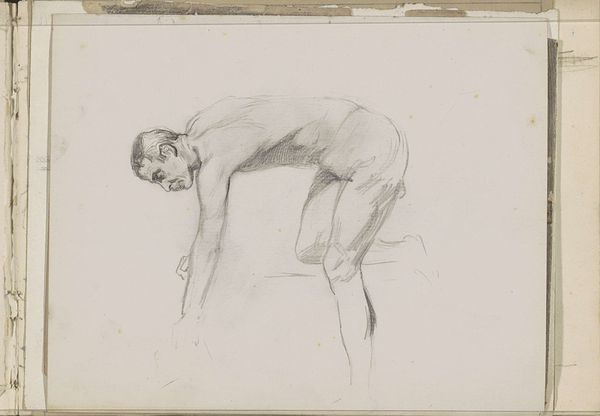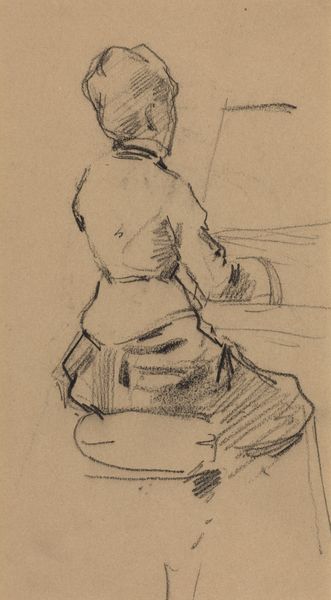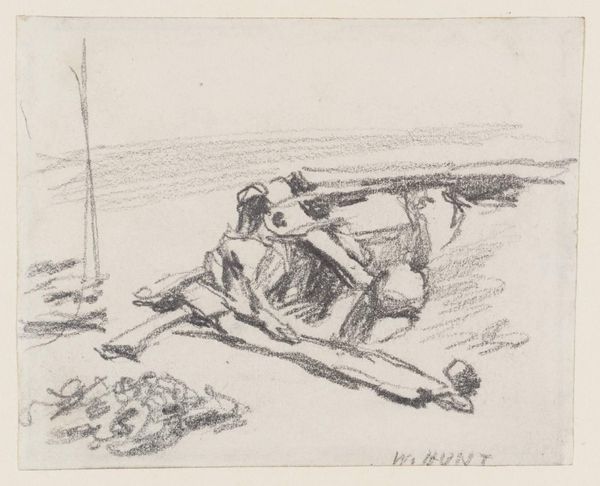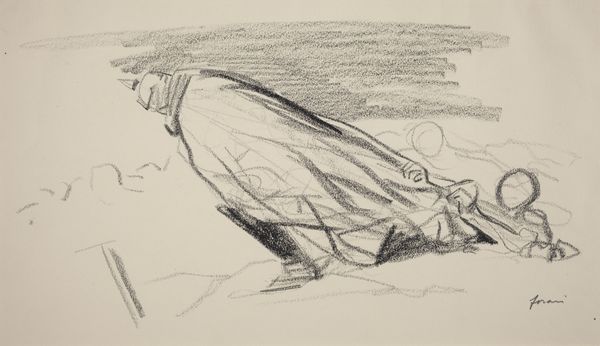
Copyright: Public Domain: Artvee
Editor: So, this drawing is titled "The Objective of War" by Jean-Louis Forain, likely made sometime between 1914 and 1919 using pencil. It strikes me as terribly bleak—almost a stage set for despair, with these solitary figures amidst so much empty space. What story do you see unfolding here? Curator: Ah, "The Objective of War." Forain wasn't just capturing a scene; he was exhaling the very spirit of those times, wasn't he? I imagine him sketching this in a dim Parisian café, the echo of distant guns somehow still reaching his ears. That vast emptiness isn't just 'empty'; it's a canvas of futility, a silent scream about the human cost of… well, objectives. Tell me, what does that kneeling figure evoke in you? Is it surrender? Prayer? Editor: I initially thought surrender, but maybe you're right, prayer makes more sense. The other figure in the distance is so isolated though, almost as if Forain has purposefully excluded any sign of hope. Curator: Precisely! And did you notice how his impressionistic lines are not trying to replicate realism but rather a feeling? The landscape feels less like physical terrain and more like a state of mind, don’t you think? It's as though the war stripped everything down to bare essentials – a single figure, a distant threat, and the heavy, oppressive emptiness. It's not really history painting at all, but history *feeling*. It is… gut wrenching. Editor: It is! So much of the focus is drawn to the desolate conditions and poses; you're right, it becomes far less about an objective and more about how dehumanizing war can be. I hadn't picked up on those subtle indicators until you highlighted the artist’s intentions. Curator: Art whispers, darling. Sometimes you just have to hold your breath and listen close to what the artist is saying.
Comments
No comments
Be the first to comment and join the conversation on the ultimate creative platform.
